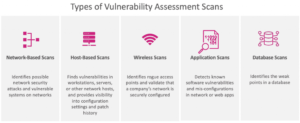Best Vulnerability Scanning Tools
Vulnerability scanning tools are computer programs that can assess a computer, network, or application for known security vulnerabilities. They are used to discover weaknesses in a system and make it more secure. There are many different types of vulnerability scanners available. Each one has a different purpose, but they all do the same basic job.
The vulnerability scanning tools that you use must be regularly updated in order to keep up with the latest threats and vulnerabilities. They should also strike a balance between identifying vulnerabilities and minimizing false positives. Moreover, they should be able to provide high-quality information about flaws, threat priorities, and remediation pathways. They should also provide comprehensive reports and fit into your vulnerability management program.
There are two main types of vulnerability scanning tools: non-credentialed and credentialed. Non-credentialed scans do not use trusted credentials to access a system, so they do not allow you to gain unauthorized access to your network. Both types of vulnerability scanning tools can provide useful information about the level of vulnerability exposure in your system.
A vulnerability scanner is a computer program that identifies known vulnerabilities on a system. These programs have a database of vulnerabilities that allows them to correlate information in real-time. You can choose between a credentialed scanner and an uncredentialed scanner based on the type of vulnerability that you’re looking for.
If you’re unsure about which vulnerability scanner you need, you can find information online. Some vulnerability scanners also have a built-in vulnerability scanner, which is a great option for small companies. These tools will enable you to scan your network and make any needed changes in a secure manner.

What Are Vulnerability Scanning Tools?
Vulnerability scanners can also be used to perform vulnerability tests on various systems, such as web servers. To make this kind of analysis, you must make sure that your hosts are connected to the internet. SNMP must be enabled and the TCP port open. The goal of this step is to fix any security gaps in your system.
Vulnerability scanning is also used to audit your network for compliance reasons. For example, PCI certification requires businesses to test their systems for specific vulnerabilities. Vulnerability scanning can also help your organization comply with regulations, such as PCI-DSS. It’s important to use a list of systems that you plan to scan and make sure that the owner of the system grants permission to scan them.
Vulnerability scanning tools can provide early warnings about intrusions. They can also identify areas that need extra protection and help you set up backup plans. While vulnerability scanning can be a time-consuming and laborious process, the results can help you make better security decisions. The right tool can save your time and money.
Some of the more advanced vulnerability scanners offer authentication checks. However, these scanners are typically not able to scan complex web applications. Additionally, these scanners may cause your systems to slow down and cause network congestion.